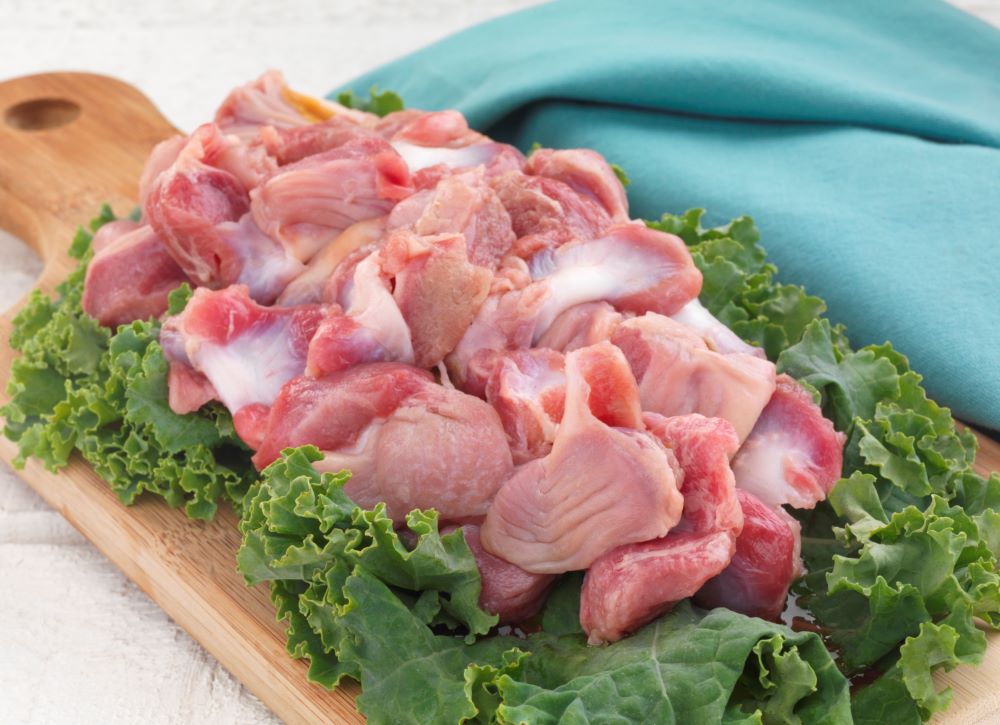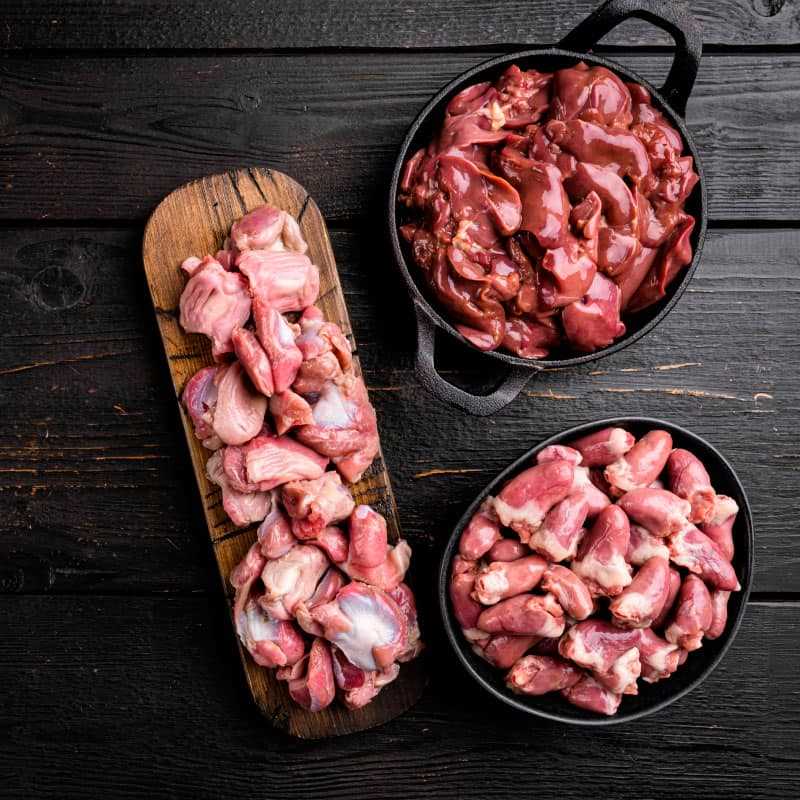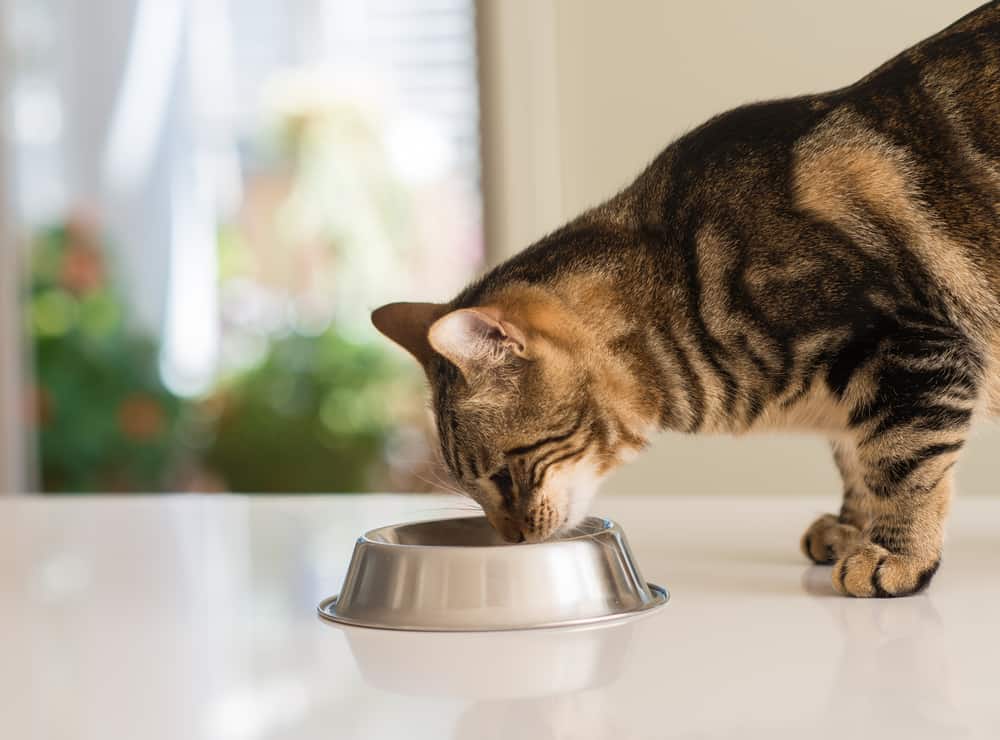How to Cook Giblets For Cats

Introducing the nutritional powerhouse of giblets into your cat’s diet can be a transformative experience. Many pet owners are unaware of the benefits that come when they cook giblets for cats and introduce it to their pet’s diets. Giblets, encompassing the heart, liver, gizzard, and sometimes the neck, offer a rich spectrum of vital nutrients crucial for your cat’s well-being.
This guide takes a professional yet accessible approach, providing insights into the selection of quality giblets, meticulous preparation methods, and cooking techniques that strike the perfect balance between flavor and nutrition. Whether you’re a seasoned cat owner or a newcomer, discover the key to crafting meals that not only delight but also nourish your pet cat.
Understanding How to Cook Giblets For Cats
Giblets, comprising the heart, liver, gizzard, and occasionally the neck of poultry, are an often-overlooked yet nutritionally dense addition to your cat’s diet. Understanding the intricacies of these edible organs is crucial for cat owners looking to provide a well-rounded and balanced nutritional profile.
The liver, a prominent component of giblets, is a nutritional powerhouse, offering significant amounts of vitamin A and B. This makes it a valuable addition to your cat’s diet, contributing to overall health. The gizzard, on the other hand, is rich in proteins, essential for maintaining your cat’s muscle mass and energy levels.
However, it’s essential to approach giblets with care. While they bring numerous benefits, moderation is key. Overfeeding certain types of giblets, especially the liver, can lead to vitamin A toxicity. Striking the right balance and incorporating giblets into your cat’s diet gradually ensures they reap the nutritional rewards without encountering potential health risks.
In essence, understanding giblets involves appreciating the diversity of nutrients they offer and being mindful of portion sizes. When introduced thoughtfully, giblets can be a valuable and flavorful addition to your cat’s meals, contributing to their overall well-being.
Choosing Quality Giblets

Selecting high-quality giblets for your pet cat is a pivotal step in ensuring they receive optimal nutrition. Quality matters, and in the world of giblets, prioritizing freshness and sourcing becomes paramount. Opt for fresh, preferably organic, giblets to guarantee your cat benefits from essential nutrients without exposure to unwanted additives or preservatives.
Understanding suitable types of giblets for cats further refines your selection process. Different organs offer distinct nutritional profiles, allowing you to tailor your choices based on your cat’s specific dietary needs and preferences.
Equally important is the need to avoid seasoned or processed giblets. These may contain additives, salt, or spices that can be detrimental to your cat’s health. Learning to read labels empowers you to make informed decisions, ensuring the giblets you choose align with your commitment to providing a wholesome and natural diet for your feline friend. In essence, choosing quality giblets is a deliberate and caring step toward promoting the overall well-being of your cherished pet.
Preparing Giblets for Cooking
Preparing giblets for cooking involves a meticulous process:
- Clean Thoroughly: Start by cleaning and rinsing the giblets to eliminate contaminants and ensure food safety.
- Trim Excess Fat and Skin: Carefully trim excess fat and skin, maintaining a balance for nutritional value without risking health issues.
- Portion Control: Cut the giblets into cat-sized portions to aid digestion and prevent overfeeding.
This step-by-step approach not only enhances the giblets’ palatability but also reflects a thoughtful and health-conscious strategy for your cat’s dietary well-being.
Different Methods to Cook Giblets For Cats
Giblets, often an overlooked culinary treasure, can be transformed into a delectable treat for your feline companion using various cooking methods. Let’s explore these techniques step by step:
1. Boiling Giblets: Simple and Nutrient-Packed
- Start by cleaning and rinsing the giblets thoroughly.
- Place them in a pot, covering with water.
- Simmer over low to medium heat until fully cooked.
- Ensure the giblets reach a safe internal temperature for consumption.
- Strain the giblets and let them cool before serving.
2. Baking or Roasting: Infusing Flavor with Heat
- Preheat your oven to the recommended temperature (usually around 350°F or 180°C).
- Lightly season the giblets, avoiding excessive use of salt or spices.
- Place them on a baking sheet or in a roasting pan.
- Roast for a calculated time, turning occasionally for an even cook.
- Confirm their readiness by checking for a golden-brown exterior and tender texture.
3. Homemade Cat Food Recipes: Crafting Culinary Delights
- Combine boiled or roasted giblets with cat-friendly ingredients like cooked rice or vegetables.
- Experiment with flavors your cat enjoys, ensuring a balanced and nutritious meal.
- Gradually introduce these homemade recipes, monitoring your cat’s response.
By following these step-by-step approaches to boiling, baking, and incorporating giblets into homemade recipes, you’ll not only unlock their nutritional benefits but also offer your feline friend a tasty and wholesome dining experience.
Portion Control and Feeding Guidelines

Navigating the delicate balance of portion control and feeding guidelines is essential for ensuring your cat’s health and satisfaction. Begin by determining the appropriate serving sizes based on your cat’s weight, age, and activity level. Tailoring portions to their specific needs prevents overfeeding, fostering a healthy weight and overall well-being.
Monitoring your cat’s response to giblets is equally vital. Observe changes in behavior and health to adjust portions accordingly. Consulting with a veterinarian provides personalized insights, ensuring your cat receives the ideal balance of nutrients. By approaching portion control thoughtfully, you not only prevent potential health issues but also establish a foundation for a long and vibrant life for your cherished feline companion. Embrace these feeding guidelines as a holistic approach to nourishing your cat, fostering a strong bond built on care and well-informed choices.
Addressing Common Concerns
In the exploration of incorporating giblets into your cat’s diet, addressing common concerns is paramount for a seamless transition. Uncover potential allergies or sensitivities by carefully observing your cat’s reactions to these new additions. Mitigate risks associated with specific types of giblets through informed choices, steering clear of potential pitfalls.
Vigilance is key in recognizing signs of overfeeding or digestive issues. This section delves into these concerns, offering insights into identifying and promptly addressing any issues that may arise. By addressing these common concerns proactively, you can ensure that the introduction of giblets is a positive and enriching experience for your feline friend. Approach these considerations with care and knowledge, establishing a foundation for a balanced and health-conscious diet tailored to your cat’s individual needs.
Tips for Introducing Giblets to Your Cat
- Quality Selection: Opt for high-quality, preferably organic, giblets to ensure optimal nutrition without unwanted additives.
- Culinary Mastery: Experiment with various cooking methods, from boiling to roasting, to elevate the gastronomic experience for your cat.
- Portion Precision: Determine appropriate serving sizes based on your cat’s weight, age, and activity level to maintain a healthy balance.
- Behavioral Observation: Monitor your cat’s response closely when introducing giblets, adjusting portions and pace to ensure a positive experience.
- Allergies and Sensitivities: Address potential concerns by carefully observing for allergies or sensitivities, making informed choices for your cat’s well-being.
- Smooth Transition Tips: Gradually introduce giblets, blending them with regular cat food to create a seamless and enjoyable culinary transition.
- Adaptability: Be adaptable in your approach, adjusting portion sizes and pace to accommodate your cat’s preferences and ensure a positive culinary experience.
- Holistic Health: Embrace these tips as a holistic guide, transforming mealtime into a nuanced and enriching experience that nurtures both health and happiness for your feline companion.
Conclusion
In closing, introducing giblets into your cat’s diet is a journey of both nutrition and flavor. From understanding the benefits to choosing quality and experimenting with cooking methods, this guide equips cat owners with the tools to enhance their furry friend’s meals. With a focus on portion control and addressing common concerns, the transition becomes a positive and health-conscious experience.
Remember to observe your cat’s response, adapt gradually, and witness the transformation of mealtime into a delightful and nourishing ritual. Here’s to the joy of happy, healthy cats and the enrichment that comes with each carefully curated giblet meal.
Related Articles
Here are some more articles you can read to help you better incorporate a more organic diet for your pet cat:


